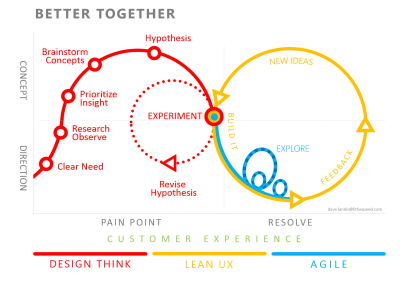Do your teams talk to each other? Do they help coach each other? Why not? Building a culture to thrive in this era of rapid disruption requires high performing teams and Feedback is a critical tool. Oddly, sales teams tend to not act as teams as often and sometimes struggle to embrace team based feedback.
Lean-Agile has gained wide support as a methodology for innovation, product development, and adding shared language and process to projects of all types. The process is easy enough to understand. The shared language enables team to quickly orient. Easy enough right?
Agile has invaded the sales methodology. The language and process map well to a selling effort. But the Feedback step is one of the most valuable and often overlooked.
People like to learn and gain experience. Typically this is a function of general information and facts. Reading, conferences, one directional education that comes from parties who are not judging our performance. People tend to shy away from performance review and direct feedback on a team or individual’s performance. Why is this? A lack of trust. Corporate culture and how feedback impacts career track or income. Perceived bias. People don’t like to review bad news. And they definitely don’t want to feel blamed.
When selling and marketing teams embrace a ‘teaming’ culture they begin to leverage each other to increase performance. Team members need strong relationships and respect the roles and performances of others. They need to become open to learning from other’s successful processes and missed opportunities they may have.
Back to feedback. Team analysis/review of a successful or failed sales process helps the entire team become more successful. What worked? What did not? What assets were valuable? Which were not? How did the customer perceive the company, brand, resources? Was the story well told? What other possible outcomes could there have been and what should the team do different in the future to achieve them? What modifications to assets would improve the selling process? Who should we add or remove from a future process? Let’s all play our respective roles better and be more successful.
In the past, most feedback has been a process conducted by managers. But in the Lean Agile world it should be a team process. The team is closest to the process and has the best insight. The manager should act as a facilitator of the conversation and agent of change on behalf of the team. However the solutions that are developed within the feedback session by the team should be theirs.
As teams take more ownership of the deals when they provide feedback on it’s performance and see change as a result. This increases team engagement, increases success, and provides a better Customer Experience.
So take time to add Feedback sessions into your sales process. Facilitate them and focus on the items, not the people. And make change as a result. This Employee Experience leads to highly engaged teams who are more successful.